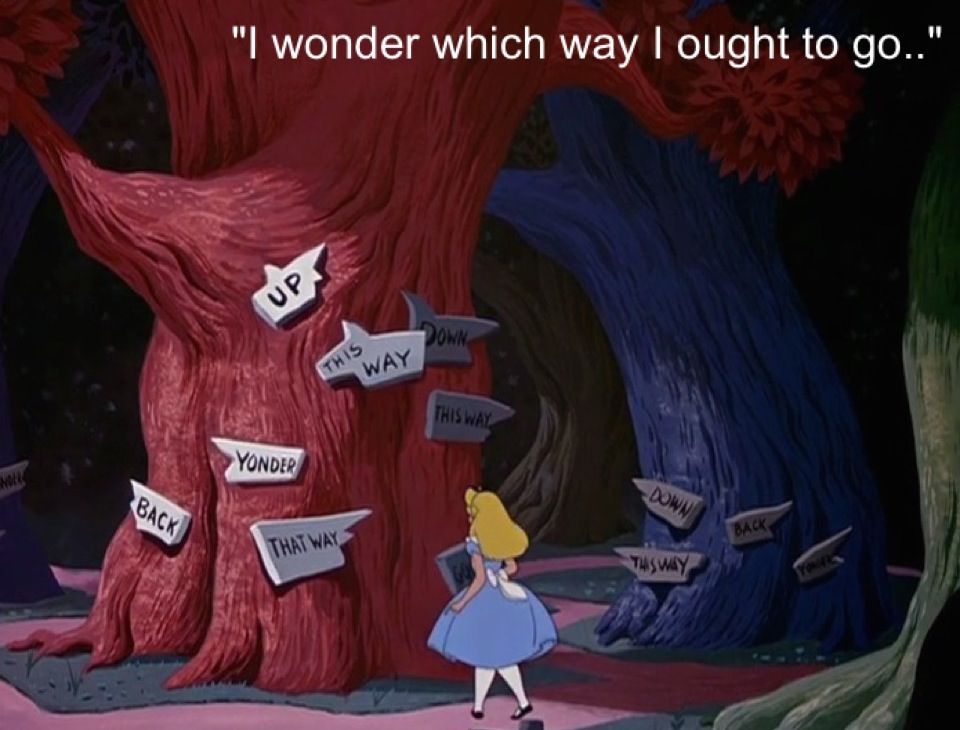
BOOK REVIEW
The Bible Made Impossible: Why Biblicism Is Not a Truly Evangelical Reading of Scripture.
by Christian Smith
Grand Rapids, MI: Brazos Press, 2012. xiv + 240 pp.
Rebel in the Ranks: Martin Luther, the Reformation, and the Conflicts That Continue to Shape Our World.
by Brad S. Gregory
New York, NY: HarperCollins, 2017. x + 310 pp.
The Unintended Reformation: How a Religious Revolution Secularized Society.
by Brad S. Gregory
Cambridge, MA: Harvard University Press, 2012. vii + 574 pp.
Having
recently written about the “Protestantization” of Islam as displayed in
Salafism, I’ve decided to try my hand at a take on Protestantization in
Christianity. The reason? Some parts of the New Testament are steeped
in Sufism and Sufi concepts. (Some serious researchers ought to devote
their not inconsiderable energies to the impartial exploration of this
fact.) Ever since the Council of Nicaea (325 CE/AD), however, church
doctrine has evolved in directions that preclude the proper appreciation
of the Sufic truth that is to be found in the New Testament (NT). The
result is a highly distorted vision of mystical truth. Because this
river has become polluted too close to the source, the distortion has
spread all across its branches.
A second reason why I propose to
write on this subject is that Jesus is considered a prophet of Islam,
along with all the rest of the prophets, and not necessarily excluding
Confucius, the Buddha, or Lao Tzu (Lao Zi), all of whom I’ve written about before (in The Black Pearl). Not being a phone book, the Koran doesn’t list all the prophets’ names, but they’re implied.
For
example, there has always been doubt about who, exactly, one of the
prophets in the Koran is: Dhul-Kifl, “of Kifl.” Now there is no letter
“p” in Arabic, so the letter “f” substitutes for it, which is why Plato
is referred to as “Aflatun” or “Falatun.” Hence, if one substitutes p for the f in Kifl, one gets Kipl, which some have taken as shorthand for Kapilavastu—the hometown of the Buddha.
A
treatment of the specifically Sufic aspects of the NT lies beyond the
scope of this article. Here I will try to concentrate on the impact of
the Reformation and the conclusions it leads me to reach. A fresh point
of view, seldom if ever attempted before, may hopefully help to shed
some light on the issues involved.
Lately
I’ve been reading three books about the Reformation, and thus this
article is at once a book review, an extended commentary, and a
meditation. (At times, I shall supplement the authors’ discussions with
my own.) Of course, I cannot hope to do justice to these books in a
short article like this, so I must content myself with pointing out some
main takeaways.
Lost in Wonderland
Christian Smith’s The Bible Made Impossible would be better titled Biblicism Made Impossible, since that is how he refers to his main subject numerous times in the book. Here is how he defines it:
By “biblicism” I mean a theory about the Bible that emphasizes
together its exclusive authority, infallibility, perspicuity, self-sufficiency, internal consistency, self-evident meaning, and universal applicability. (p. viii)
His more detailed treatment roughly corresponds to the doctrine of “the Bible alone,” Sola Scriptura (see Sidebar 1), although it appears to be more general. (In fact, Sola Scriptura is explicitly listed as one of the defining themes of biblicism.)
The
problem with biblicism, Smith asserts, is that it gives rise to
“pervasive interpretive pluralism.” In his Introduction, he summarizes
the reasons for this as follows:
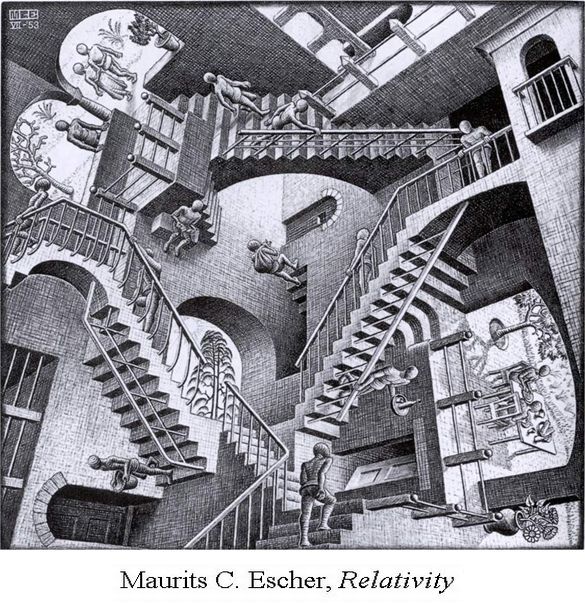 ...
the Bible contains a variety of texts that are problematic in different
ways and that biblicist (among other) readers rarely know how to
handle. Some are texts that frankly almost no reader is going to live
by, however committed in theory they may be to biblicism. Others are
texts that need explaining away by appeals to cultural relativity
(although no principled guidelines exist about when that explanation
should and should not be applied). Some are passages that are simply
strange. And some are texts that seem to be incompatible with other
texts. (xi)
...
the Bible contains a variety of texts that are problematic in different
ways and that biblicist (among other) readers rarely know how to
handle. Some are texts that frankly almost no reader is going to live
by, however committed in theory they may be to biblicism. Others are
texts that need explaining away by appeals to cultural relativity
(although no principled guidelines exist about when that explanation
should and should not be applied). Some are passages that are simply
strange. And some are texts that seem to be incompatible with other
texts. (xi)
Smith uses a quote from the British romantic poet William Blake to state the problem in a nutshell (I paraphrase):
Both read the Bible day and night,
But you read black where I read white. (20)
Smith
also quotes Vern Poythress: “On most matters of significance concerning
Christian doctrine, salvation, church life, practice, and morality,
different Christians—including different biblicist Christians—insist
that the Bible teaches positions that are divergent and often
incompatible with one another.” (22)
Nor is this a problem that
started with the Reformation. It goes all the way back to the early
origins of Christianity. The reason is that the Bible does not speak
with one voice. Scholars have identified at least four authors
(abbreviated as J, D, E and P) for
the Old Testament (OT). As for the New Testament, there are four
gospels, all by different authors, the numerous letters of Paul, the
epistles of James, Timothy, Titus, Philemon, Barnabas ... According to a
source quoted by Smith (p. 7), the 66 books of the Bible (39 OT plus 27
NT) were written by more than 40 men, not all of whom agree on all
subjects with each other. Further, not only is the Bible multivocal, it
is also polysemic: multiple possible meanings for a word or phrase can
coexist.
Add to this the effects of translation—or rather, mistranslation. For example:
God was in Christ, reconciling the world to Himself. (2 Cor. 5:19, KJV)
Which should actually read:
In Christ, God was reconciling the world to Himself. (RSV, NRSV)
Factors
such as these led Vincent of Lérins, as far back as the early fifth
century, to write: “Owing to the depth of Holy Scripture, all do not
accept it in one and the same sense, but one understands its words in
one way, another in another, so that it seems capable of as many
interpretations as there are interpreters.” Or as Luther put it, “I can
easily prove from Scripture that beer is better than wine.”
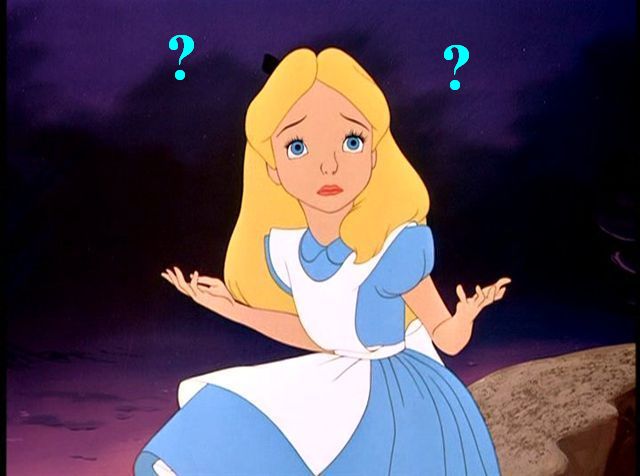 The
result is an uncontrolled—and uncontrollable—proliferation of “many
thousands of different denominations, conventions, associations,
quasidenominational groups, and independent congregations.” (189) And
this is not a recent outcome—it was built into the Bible right from the
start.
The
result is an uncontrolled—and uncontrollable—proliferation of “many
thousands of different denominations, conventions, associations,
quasidenominational groups, and independent congregations.” (189) And
this is not a recent outcome—it was built into the Bible right from the
start.
The
Christian church today exists in the fragmented form of literally
untold thousands of denominations, dioceses, conventions, and individual
congregations. Baptists alone are comprised of hundreds of
denominations and groupings. (28)
Just how many denominations are there? Of one thing I am sure: with the exception of God, nobody knows for sure. It also depends on how “denomination” is defined. The World Christian Encyclopedia (WCE) of 2001, a standard reference work, listed the following approximate numbers:
Catholics: 242
Orthodox: 781
Protestants: 9000
Anglicans: 168
Marginals: 1600
Independents: 22,000 [1]
To
obtain the impact of the Reformation, we need to exclude the Catholics
and the Orthodox, while including all Reformation and post-Reformation
churches. This gives 32,768, or 97% of the grand total. Further, the
number of denominations is estimated to increase at the rate of 5 per
week (or one every weekday), so the figure is constantly incrementing.
The latest rate I have (as of end-2016) is that 2.4 new denominations
are forming every day. The source gives 45,000 denominations for that
date. [2] A website that automatically calculates the total Christian denominations count gives 51,564 as of March 30, 2021 [3].
97% of that exceeds 50,000. Of course, this still excludes the
nondenominationals or “nones.” In sum, there should be more than 50
thousand (and counting) Christian denominations worldwide that can be
ascribed to the impact of the Reformation.
Which path are you going to choose?
But the theoretical limit is actually worse than even this. Smith cites a popular evangelical book [4] comparing two-, three-, or four-alternative, Bible-based evangelical views:
each of seventeen theological concerns about which contemporary evangelicals disagree—in theory creat[e] more than five million
unique, potential theological belief positions that any given person
might espouse, composed of possible combinations of the alternative
views. [Total 17 cases, 2^10 x 3^4 x 4^3 = 5,308,416. Emphasis in the original.] (23)
And this is just for 17 points.
Hence,
says Smith, “not only are Christians divided about essential matters of
doctrine and faithful practice; they are also sometimes divided on what
even counts as essential.” (25)
As
has often been noted, the descriptions of God in the OT and the NT are fundamentally
at odds in some important respects. The former is a wrathful God, the
latter a God of love. Within the NT itself, the four Gospels alone
frequently contradict or are at variance with each other. These points
are so well-known that I feel no need to belabor them here.
Even
the question of Jesus’ divinity is far from settled. Jaroslav Pelikan
has identified at least four sets of biblical passages dealing with this
issue: passages of adoption (Sonship), identity, distinction, and
derivation—not all of which are mutually compatible. [5]
In other words, the Bible doesn’t resolve it at all. (Only one of these
versions can be true, and that is the one where Jesus says: “Why do you
call me good? Only God is good” (Mark 10:18, Luke 18:19) and “My Father
is greater than I” (John 14:28). Note that he says the latter in John,
which is supposed to be the gospel that most implies divinity.)
Smith’s conclusion?
...
on important matters the Bible apparently is not clear, consistent, and
univocal enough to enable the best-intentioned, most highly skilled,
believing readers to come to agreement as to what it teaches. That is an
empirical, historical, undeniable, and ever-present reality. It is, in
fact, the single reality that has most shaped the organizational and
cultural life of the Christian church, which now, particularly in the
United States, exists in a state of massive fragmentation. [Emphasis in the original.] (25)
How did things get to this point?
 Ideally,
one would have to begin at the beginning, with the first centuries of
Christianity, and deal with the great schism of 1054—the split of the
Eastern Orthodox Church—along the way. But none of this will suffice to
explain the tens of thousands of splinters. For this, we have to focus
on the Reformation itself.
Ideally,
one would have to begin at the beginning, with the first centuries of
Christianity, and deal with the great schism of 1054—the split of the
Eastern Orthodox Church—along the way. But none of this will suffice to
explain the tens of thousands of splinters. For this, we have to focus
on the Reformation itself.
A Guide for the Perplexed
Brad Gregory is both a professor of history and a moralist. In Rebel In The Ranks (henceforth Rebel),
he provides a concise and immensely readable account of Luther and the
Reformation. The book was published in 2017, the 500th anniversary of
the Reformation, which started when Luther proverbially nailed his 95
Theses to the door of the Wittenberg Church. Despite the fact that it
was published after Gregory’s The Unintended Reformation (henceforth UR), it also serves as a fine introduction to that book, since the latter is built on knowledge provided in Rebel and is very densely argued. For those new to such matters, Rebel is definitely the first book to read.
As Gregory makes clear in the early pages of Rebel,
medieval Christianity was “religion as more-than-religion.” By this, he
means that religion has come to mean a restricted thing in our day,
confined to private beliefs and worship. At that time, however, it
encompassed and informed all domains of human life: social, political,
economic, cultural, philosophical, legal, and so on. The Reformation
era, however, put an end to all that. As Gregory had concluded in an
earlier work, “Because the prospects for peaceful coexistence among
Christians were tenuous at best, ... only nonreligious values could
serve as the basis of stable social and political life.” [6] And so, secularization and modernity became inevitable.
The Unintended Reformation
is also a passionate cry—or at least, as impassioned as a staid
university professor might allow himself to be. By “Unintended,” Gregory
means that the actions of the reformers had outcomes that they never
consciously aimed at. The effects were indirect: they were not caused by
the teachings of the reformers, but—as Gregory puts it—by “the
doctrinal disagreements and religio-political conflicts” of the
Reformation era, which gave rise in due time to modernity, secularism,
and the world we live in today. This, however, had never been the
intention of the reformers; they had simply desired a world where they
could live their religion better. (“Reform demanded that everyone be a real, 100 percent Christian.”—Charles Taylor.)
In
both books, Gregory presents a picture of pre-Reformation Christianity
as a backdrop. All across Europe, there is at that time a shared world
of values. Christian (that is, Catholic) ethics informs all aspects of
life: economic, political, social, cultural. Compared to what comes
afterward, the conditions are almost idyllic.
Perhaps the
weakest point of both books is Gregory’s answer to the question: if
things were so great, why did the Reformation take place at all? Why was
an obscure monk in a negligible German village able to shake Western
history and culture to their foundations, with tremors that still
continue to reverberate today?
Gregory does acknowledge the faults of the Roman Church. He points to the “chasm” between theory (or ideals) and practice (or reality). He also suggests that life in “late medieval Europe” meant “a frequently harsh human world embedded within a constantly harsh material one.” (UR
195) Hundreds of years of clerical misdeeds, though, had already
prepared the groundwork, and the situation was ripe for the picking, as
it were. Also, Luther arrived on the scene at exactly the right moment,
when the historical and political situation allowed events to unfold as
they did. Gregory, however, is much more interested in the aftermath.
The Reformation in a Nutshell
 To
summarize in a few words the events that have filled many bookshelves,
Luther objects to the papal practice of Indulgences, a way of extracting
money from credulous believers. Rome objects, Luther stands his ground.
It is a case of an irresistible force meeting an immovable object.
To
summarize in a few words the events that have filled many bookshelves,
Luther objects to the papal practice of Indulgences, a way of extracting
money from credulous believers. Rome objects, Luther stands his ground.
It is a case of an irresistible force meeting an immovable object.
In
a manner quite reminiscent of Islam, Luther comes to rebel against the
Mass, against images, against the ordained and celibate clergy (a
“two-tiered”
society comprising clergy versus the laity), and against the church
without which there is no salvation. Under different circumstances, in
another time and/or place, Luther would have been burnt at the stake.
What saved him was—besides divine Providence—a unique combination of
historical conditions.
Relationships and invective quickly turn
acrimonious. Luther starts launching broadsides, enabled by the
relatively recent invention of the printing press. His ideas begin to
spread like wildfire, first in Germany and then all across Europe.
Excommunicated by Rome, he wins support from German princes, who soon
will battle other princes who remain Catholic. Luther’s ideas inspire
rebellion elsewhere, but other than that common cause, not all rebels
agree with Luther’s views. Political authorities get involved. Peasant
revolts are bloodily suppressed. Then come the wars, starting from
1523—not just between Catholics and Protestants, but also between
Protestants and Protestants. The Peasants’ War. The 30 Years War. The 80
Years War. By the time the Treaty of Westphalia is signed in 1648,
Europe is drained and exhausted. One estimate of the death toll places
it at more than 5 million (at a time when the continent was much less
populated than it is today). The 30 Years War alone may have killed as
much as 40 percent of the German population. The Catholic Church emerges
shaken from the ordeal, its power and authority vastly diminished.
The
survivors came to regard endlessly fighting each other as a terrible
fate: “they considered grudging coexistence better than disruptive
hostility, let alone war.” (Rebel 214) They came to the conclusion that religious tolerance was an absolute necessity. Almost everything else followed from that.
That,
in brief, is the short version. Gregory maintains, however, that things
didn’t end there—that the repercussions have shaped, and are still
shaping, events in our day. Moreover, he claims, many of the results we
see around us were never intended at all by Luther or the ensuing Reform
movement. If Luther were to rise from his grave today, he would be
chastened and crestfallen (more probably, enraged) by the world we live
in.
In what follows, I propose to do a chapter-by-chapter review of UR.

[Sidebar 1]
The Five Solae: Basics of Protestantism
Protestantism, initiated by Martin Luther in the 16th century, is based on five principles—the five Solae (“Alones”),
as they are called. Of these, Luther emphasized the first three. The
last two were mentioned over the centuries, but they were all brought
together in the 20th century (in 1965).
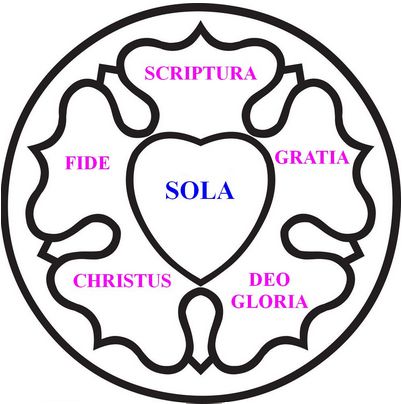 Luther’s
main opponent is the Roman church, and it was his intention to do away
with its authority. In Catholicism, the populace is divided into two
classes: the clergy, or priests of the church, and the laity (lay
persons of all kinds). In opposing the Roman church, Lutherans posited
the “priesthood of all believers.”
The personal, existential crisis that Luther was living through
intersected with some longstanding problems of the Catholic church, and
from that intersection the Reformation was born. Protestants have since
argued that if the church had responded to Luther with charity instead
of coercion, a split might not have been necessary. However that may be,
Luther’s stand (“Here I stand ...”)
was based on some fundamental differences in doctrine which could not
easily be resolved. The Reformists, one and all, accused the Catholic
church of teaching false doctrine. It was not simply a matter of the
difference between good theory versus bad practice (not practicing what
one rightly preached), but a question of bad theory (doctrine), as well.
Luther’s
main opponent is the Roman church, and it was his intention to do away
with its authority. In Catholicism, the populace is divided into two
classes: the clergy, or priests of the church, and the laity (lay
persons of all kinds). In opposing the Roman church, Lutherans posited
the “priesthood of all believers.”
The personal, existential crisis that Luther was living through
intersected with some longstanding problems of the Catholic church, and
from that intersection the Reformation was born. Protestants have since
argued that if the church had responded to Luther with charity instead
of coercion, a split might not have been necessary. However that may be,
Luther’s stand (“Here I stand ...”)
was based on some fundamental differences in doctrine which could not
easily be resolved. The Reformists, one and all, accused the Catholic
church of teaching false doctrine. It was not simply a matter of the
difference between good theory versus bad practice (not practicing what
one rightly preached), but a question of bad theory (doctrine), as well.
Sola Scriptura: Scripture (the Bible) Alone
In addition to the Bible, the church had, over the centuries, developed a body of guidelines called “tradition.”
The teachings of Jesus and his Apostles were preserved not only in the
scriptures, but also had been transmitted by word of mouth. “Apostolic transmission”
meant that the teachings of the Apostles were handed down faithfully
via the church Fathers from one generation to the next, up to the
present day. This oral tradition was not committed definitively to
writing and could vary from place to place. The first attempt to fix it
in print was in 1566, after the Council of Trent. The final form was
given to it in the “Catechism (approx. “Echo”) of the Catholic Church” as recently as 1992.
Luther
and the other Reformers repudiated this tradition. In their view, only
the Bible could be considered authentic, and anything at variance with
it had to be discarded. The Bible’s meanings were clear, and the Bible
was the best interpreter of itself. Many spurious things had crept into
tradition. God’s word was freely accessible to anyone of average
intelligence without the interpretation of priests, and did not require
any special education. Therefore, all authority claimed by the Roman
church on the basis of tradition was null and void.
Comparison. During his Farewell Sermon, the Prophet said: “I leave you two things: the Koran and my Way (sunna: the words and deeds of the Prophet). As long as you follow these two, you will never go astray.” (Hakim, Mustadrak and Bayhaqi, Sunan Kubra.) The Way of the Prophet is preserved in his Sayings or “Traditions” (hadith).
The Traditions explicate and support the Koran: they are essential for
the proper implementation of worship and conduct. Because there is no
church in Islam, Luther’s objections do not apply. There is no priestly
class, and hence no distinction between clergy and laity. Any believer
can serve as Prayer-leader (imam).
Sola Fide: Faith Alone
This
was the central doctrine for Martin Luther and the other reformers, to
the extent that Luther called it the “doctrine by which the church
stands or falls.”
For Luther, an issue of prime importance was how a believer is justified. “Just-ification”
here means being declared just by God, considered righteous, or being
approved by God. It is based on St. Paul, who wrote: “The just shall
live by faith”
(Romans 1:17). Luther’s spiritual crisis led him to the belief that the
deeds or works of a believer—or the intercession of any church—counted
as nothing in terms of justification, and only one’s faith was
essential. This ran counter to the teaching of the Catholic church,
which held that faith and good works were both necessary. This found
expression in James 2:17—“Faith without good works is dead.” (“Dead” (Gk. nekra)
has been variously translated as naught, useless, or worthless.) James
2:24 is even clearer: “a person is justified by works and not by faith
alone.”
This was so diametrically opposed to what Luther was saying that he
regarded the epistle of James as a spurious book, at times calling it
the “epistle of straw”—which, however, ran against his principle of Sola Scriptura.
Luther considered it among “disputed books” (along with Hebrews, Jude,
and Revelation), and placed these separately at the end of his NT
translation as appendices.
It
was not that Lutherans and Reformed (Calvinist) Christians dismissed
good works entirely. Rather, they believed that if one has true faith,
good works would follow of themselves. Thus Luther: “Faith cannot help
doing good works constantly.”
However, de-emphasizing good works in this way, when coupled with the
confession of sins and their absolution by faith in Christ (a kind of
get-out-of-jail-free card), has its consequences. “Be a sinner, and let
your sins be strong, but let your trust in Christ be stronger,” Luther
wrote. (So if I believe my trust in Christ is strong enough, I can do
anything?)
Comparison. The Prophet accepted that the Declaration of Faith (“I bear witness that there is no god but God, and I bear witness that Mohammed is the servant and Messenger of God”)
is enough for a person to enter the religion. But as soon as one does
so, one is obliged to carry out the requisite ethical and devotional
actions (the remaining four of the Five Pillars of Islam).
Sola Gratia: Grace Alone
This
principle again ties in with good works. The doctrine of the Catholic
church was that a believer can cooperate with God’s grace to earn
merits, or to “merit” greater graces. According to “grace alone,”
on the other hand, no meritorious action done by a person can
contribute to one’s salvation. Salvation can come about only by God’s
grace, or unmerited favor, not as something that a sinner merits. It is
an unearned gift from God.
Some have combined “faith alone” and “grace alone” to come up with “Salvation through faith alone,” which directly contradicts the “salvation is only within the church” of Catholicism.
This
begs the question: salvation from what? The short answer is: salvation
from sin, where sin is defined as violating or failing to obey God’s
law. But there is something deeper involved here. The doctrine of
Original Sin states that humanity is in a fallen state and in need of
redemption. Because Adam and Eve ate the Forbidden Fruit (often
identified with sexual intercourse in Christianity), they were expelled
from Paradise. Ever since, every newborn baby is genetically tainted
with that sin, which can only be neutralized (that is, a person can be
“saved”)
by belief in Christ and not by any meritorious deed whatsoever. As
Luther put it, “God has ordained that man should be saved not by the law
but by Christ.”
He too believed that Adamic guilt is a hereditary genetic defect, and
that human beings are in a state of sin from the moment they are
conceived.
This
doctrine is actually unbiblical. It was due largely to St. Augustine
(admired and studied by Luther), who could not read the Old and New
Testaments in their original languages. Seeking a reason for the baptism
of infants, he hit upon a mistranslation of Romans 5:12. Ambrosiaster, a
contemporary of Ambrose, had substituted “in him [Adam] all sinned” for “because all sinned”.
Augustine used this to develop his teaching of Original Sin in its
entirety. Instead of viewing infant baptism as a simple ceremony for
entry into Christianity, he built an elaborate theory around it. Every
human being was born crippled, and needed a crutch. That crutch was to
be the church, composed of clergy who are more “elevated”
and able to speak in the name of God. (“You are damaged and only we can
repair you.”) As first expressed by Cyprian, “there is no salvation
outside the church” (extra ecclesiam nulla salus). Luther held and all subsequent churches still hold this to be true. While Luther believed in “salvation by grace alone,” it appears he thought that a church (though not the Catholic one) was still necessary.
Since no deed can help us to earn salvation, the importance of good works is further diminished in “grace alone.” Together with “faith alone,” this inadvertent double attenuation serves as a disincentive for carrying out good deeds.
Comparison.
The doctrine of Original Sin does not exist in Islam (or in Judaism),
and hence neither does salvation in the Augustinian sense. Therefore, a church is not needed. “No soul bears the burden (sin) of another” (53:38). The Bible concurs: “Each person shall bear their own burden ... A person reaps what s/he sows”
(Galatians 6:5, 7). Nobody bears the sin of Adam, and Jesus bears the
sin of no one. The human tendency to evil is not due to any original
sin, but to the Base Self, which therefore needs to be tamed and
purified. One is free (indeed, encouraged) to accumulate as much merit
as one can, through the avoidance of sin and performance of good works.
God’s grace is a freely given gift for all believers. Only if one
regards one’s deeds with pride instead of humility may that grace be
revoked and one’s gains from a deed nullified.
We can summarize the results for the first three Solae in the following table. From the Sufic point of view, the Islamic equivalents of tradition (Sunna), works (amal) and merit (sawâb/thawâb) cannot be ditched and would need to be retained:

Solus Christus: Christ Alone
Christ
is the only mediator between God and man. This is specifically aimed at
excluding the church and clergy. It denies that the Pope is Christ’s
representative head of the church on earth. It does away with priests
and the church as mediating entities between the believer and God.
Further, the priestly class is not necessary for administering the
Christian sacraments. Salvation cannot be obtained without Christ.
Luther eliminated the middleman; one can confess directly to God, as in
Islam, without a priest. When Luther says: “My Christianity is something
between God and myself,” he is giving voice to an Islamic precept.
Comparison.
There is no church, and hence no intermediary between God and a
believer. The Prophet, who loves and cares for his community, is granted
the right to intercede in favor of believers on Judgment Day. Any
saints or holies deputized by God and His Prophet for this purpose may
also be empowered to do so.
Soli Deo Gloria: Glory of God Alone
This is to praise God alone. It opposes the veneration of Mary the mother of Jesus (“Mariolatry”),
the saints, or angels, which is said to be practised in the Catholic
church. This is again a postulate designed to exclude the church. Human
beings (even saints of the Catholic church, the popes, and the clerical
hierarchy) are not worthy of any glory accorded them. On the other hand,
Catholics see veneration, not as praying to the saints or the Virgin Mary, but as praying through them.
Comparison. Praise belongs to God alone. After each of the Five Daily Prayers, “Glory to God” (Subhan Allah: “Glorified is God,” or “God is above all things”) is recited 33 times prior to personal petitions. “The Glorious” (al-Mâjid) is also one of the Divine Names. Regarding the veneration and petitioning of saints, the fulfillment of wishes is not sought from a saint, but from God by means of a saint.
Sola Fide and Ethics
The problem with “faith alone”
is that no virtue can contribute to your salvation. And worse, no
avoidance of any sin can contribute to it, either. The Book of Deeds—of
which everyone has their own copy—is, as it were, closed and sealed
forever. If you do good deeds, it means you’re already saved, while if
you do bad, you’re damned anyway (the doctrine of double
predestination). This is a tremendous disincentive to act according to
an ethics of virtue. If it doesn’t matter what you do, why bother? It is
also a denial of free will.
Morality and religion were thus separated,
however inadvertently: what you did was inconsequential, what you
believed was everything. Whereas belief is, or ought to be, merely the
starting point for right action. Ethics was sundered from fate, even
though your thoughts and actions are what determine your ultimate
destiny (personal responsibility).
The answer to double predestination is: Although God knows who is cursed and who blessed, we as mortals
with limited knowledge don’t, so it is incumbent on us to act as
required by God no matter what our fate (essentially Leibniz’ argument).
And who knows, depending on our performance, God may decide to save us
after all. The Prophet gave the example of a woman of ill repute who was
saved because she used her shoe to draw water from a well to give drink
to a thirsty dog. If double predestination had stood in the way of
redemption, he wouldn’t have told it. So we shouldn’t give up striving,
until our dying breath.
Another
such Tradition is: “If you know [for a mathematical certainty] that
Doomsday is tomorrow, don’t hesitate to plant a tree today.” This is, above all, a message of hope.
It is not that Luther ever intended that morality should be thus set adrift. It is that Sola Fide/Sciptura left a loophole through which the Base Self (I’m always writing about the Base Self) is able to drive a container truck.
 From Theism to Nontheism
From Theism to Nontheism
In Chapter 1 of UR, “Excluding God,” Gregory identifies “univocity” as a prime cause that led to the Reformation and its aftermath. Now what does he mean by that?
As conceived by Thomas Aquinas, and many Christian thinkers before him, God is “wholly other:”
He is utterly distinct from the universe, beyond space and time, wholly
transcendent, and incomparable to anything at all. But this renders
God, who is already unobservable to the senses, also incomprehensible to
human reason.
According to John Duns Scotus, however, this view
was deficient. God had at least one characteristic that He shared with
all other beings: that of being. This is what Gregory means by “univocal:” God exists in the same sense as everything else. Scotus himself used the term “univocity” (univocationem).
(The opposite of this would be that God’s being is not of the same kind
as the being of creatures, but only analogous, or similar, to theirs.)
But
this has unforeseen and undesirable implications. It lowers the status
of God: although He may be superior to all other things in every way, He
is still a being among all other beings. This is precisely what
Heidegger, in the 20th century, objected against: even if God is the
highest being, or the first among beings, he is still a
being, which is to reduce the Creator to the status of the created.
“God, the first of beings, is degraded to the highest value”
(Heidegger). Gregory calls it the “domestication of God’s transcendence.”
This,
however, is also to situate God within space and time, to ascribe limit
and finitude to Him. Once this point is reached, there is no turning
back: reason and science, being unable to find any trace of such a God
within nature, will, by the power of Occam’s Razor, exclude God as a
“hypothesis” (to use Laplace’s term). This leads inevitably to secularization and the disenchantment of the world.
What can Sufism say about this?
According
to the great Sufi saint Ibn Arabi, God is not a being among other
beings, but Being Itself (also, though not only, in the Heideggerian
sense), and Being is One. God is not a specific “thing,” but is immanent in the entire universe. Whatever you find is not God, but a manifestation (zuhur), a self-disclosure (tajalli) of God. (This has incorrectly been called panentheism, “all in God.” A better term has been coined for it: theo-en-panism, “God in all.”)
Moreover, Ibn Arabi is careful to point out that God’s immanence (similarity: tashbih) or God’s transcendence (incomparability: tanzih),
taken alone and exclusive of each other, would lead to insoluble
problems. If you think of God only as transcendent, you will argue Him
out of existence, because He is totally hidden and incomprehensible
(which is why Duns Scotus said what he did). On the other hand, if you
think of God as solely immanent, you will end up in pantheism (which is
to collapse God onto the universe), or in worshiping a human being (“Immanuel”).
The
correct approach, according to Ibn Arabi, is to take these two
together: God is both immanent and transcendent, both similar to other
beings and incomparable to any of them. Hence he is fond of quoting a
Koranic Verse: “There is nothing whatever like Him, He is the
All-hearing, the All-seeing”
(42:11). Here, in one Verse, similarity and incomparability are
mentioned in the same breath. From this, we arrive at the Positive
Attributes of God, such as Hearing, Sight, Knowledge, and Life, and the
Negative Attributes, such as Infinity, Immortality, and Independent Self-existence (existence by His Self alone, without being dependent on anything else).
A Starburst of Doctrines
 Chapter 2 of UR, “Relativizing Doctrines,” deals with the consequences of Sola Scriptura. What Smith calls “pervasive interpretive pluralism”, Gregory refers to in a more general sense as “contemporary Western hyperpluralism”, which has resulted from the endlessly divisive tendencies of the Reformers.
Chapter 2 of UR, “Relativizing Doctrines,” deals with the consequences of Sola Scriptura. What Smith calls “pervasive interpretive pluralism”, Gregory refers to in a more general sense as “contemporary Western hyperpluralism”, which has resulted from the endlessly divisive tendencies of the Reformers.
No
sooner does Luther raise his banner of rebellion against the Church,
stating that he will interpret Scripture on his own, than others follow
in his wake. They too raise their banner, only not just against the
Church, but also against Luther, and indeed, against each other—in a
Hobbesian “war of all against all”.
At
first, it seems as if inspiration by the Holy Spirit might provide a
solution. But as soon as one claims recourse to the Holy Spirit, all the
others, not to be outdone, do so as well. “What am I to do,” Erasmus
complains in 1524, “when many persons allege different interpretations,
each one of whom swears to have the Spirit?” (UR p. 98) Thus,
the field of Bible interpretation is soon flooded with a multitude of
contradictory truth claims, each asserting exclusive access to the Holy
Spirit. Here, for example, is one exchange:
whereas
Zwingli wrote, “I know for certain that God teaches me, because I have
experienced it,” Luther countered, “Beware of Zwingli and avoid his
books as the hellish poison of Satan [hellischen Satans gifft], for the man is completely perverted [gantz verkeret] and has completely lost Christ.” (UR 98)

[Sidebar 2]
Martin Luther and the Trinity
Although Luther inaugurated significant reforms in Christianity, he left the Trinity untouched.
The early Christians knew nothing of the Trinity. They only knew the One God, whom they called “the Father” [7]. It started off as a Binity, when the Byzantine emperor Constantine imposed the term homoousios (“of the same substance/essence”)
on the participants of the Council of Nicaea (325 CE/AD)—a term that
had already been condemned in the Synods of Antioch in 269. The Holy
Spirit was later added to form the Trinity at the First Council of
Constantinople (381), after which it became canonical church doctrine.
Sometime in the early 3rd century, the church father Tertullian had been
the first to advance a notion of a holy triad, but his version was not a
triune God but more akin to the emanationism of Plotinus. [8]
The
doctrine of the Trinity, however, in turn gave rise to a spate of
problems that took a series of church councils to contain. The church
itself has declared it to be a mystery, and it was never fully resolved.
How
did the doctrine become consolidated? Although Athanasius laid the
groundwork, it was the 4th-century Cappadocian Fathers (Gregory of
Nyssa, Gregory of Nazianzus, and Basil of Caesarea) who really
established the Trinity. Striving to spread the gospel in Anatolia, they
felt that Christianity was in danger of becoming absorbed back into
monotheistic Judaism on the one hand, and of being torn apart by
polytheistic paganism on the other. Hence, they used unity as a shield
against paganism and trinity as protection against Judaism. Gregory of
Nyssa wrote:
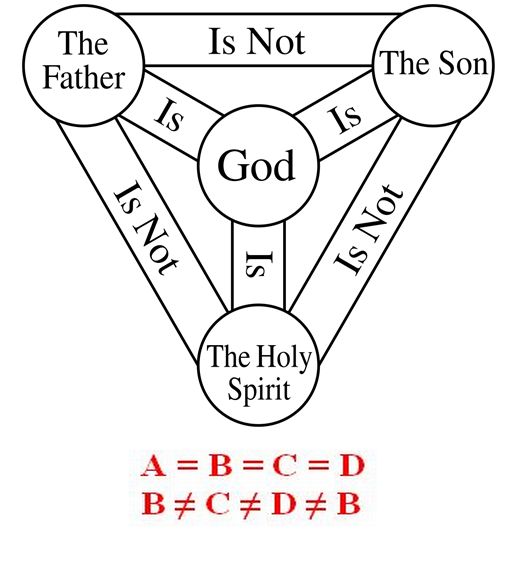 Truth
passes in the mean between these two conceptions, destroying each
heresy, and yet accepting what is useful to it from each. The Jewish
dogma is destroyed by the acceptance of the Logos [Word/Son] and by the
belief in the Spirit, while the polytheistic error of the Greek school
is made to vanish by the Unity of the [divine] nature abrogating this
notion of plurality. Yet again, of the Jewish conception, let the Unity
of the nature stand, and of the Greek, only the distinction as to
persons. It is as if the number of the Trinity were a remedy in the case
of those who are in error as to the One, and the assertion of the unity
for those whose beliefs are dispersed among a number of divinities. [9]
Truth
passes in the mean between these two conceptions, destroying each
heresy, and yet accepting what is useful to it from each. The Jewish
dogma is destroyed by the acceptance of the Logos [Word/Son] and by the
belief in the Spirit, while the polytheistic error of the Greek school
is made to vanish by the Unity of the [divine] nature abrogating this
notion of plurality. Yet again, of the Jewish conception, let the Unity
of the nature stand, and of the Greek, only the distinction as to
persons. It is as if the number of the Trinity were a remedy in the case
of those who are in error as to the One, and the assertion of the unity
for those whose beliefs are dispersed among a number of divinities. [9]
This
compromise between monotheism and polytheism was to have far-reaching
consequences. As the Nyssan notes above, monotheism “is destroyed.”
The Trinitarian doctrine has often been accused of tritheism, but this is not quite accurate. Rather, to coin a new term, it is tripartheism—a
theism that is tripartite. The early Fathers succeeded in doing
something no one had done before: they divided God in three. As the
Indian poet Akbar Illahabadi recognized, the doctrine “cuts up God
himself into three pieces.”
Though it is claimed that each Person is fully God and not one-third of
God, this makes no sense. To paraphrase Master Ahmet Kayhan: God is
immanent in every particle, but nevertheless every particle is not God. (TPM
193) At bottom, the Trinity appears to be an attempt to trisect God.
(It would have been better if they had stuck with Tertullian.)
The Johannine Comma
The Stanford Encyclopedia of Philosophy states it clearly: “The New Testament contains no explicit trinitarian doctrine.” However, it has been argued that the doctrine is implicitly present. It is part of the church tradition that Luther repudiated.
The most clearly Trinitarian verse in the Bible is found in 1 John 5:7. Luther translated it as follows (1545):
7 Denn drei sind, die da zeugen im Himmel: der Vater, das Wort und der Heilige Geist; und diese drei sind eins. 8 Und drei sind, die da zeugen auf Erden: der Geist und das Wasser und das Blut; und die drei sind beisammen.
The King James Version (KJV, 1611) translation matches Luther’s:
7 For there are three that bear record in heaven, the Father, the Word, and the Holy Ghost: and these three are one. 8 And there are three that bear witness in earth, the Spirit, and the Water, and the Blood, and these three agree in one.
The part that is bolded is known as the “Johannine Comma”. But when we go to modern translations, that is not what we find:
7
For there are three that testify: 8 the Spirit, the water and the
blood; and the three agree/are in agreement. (e.g. NIV, NRSV)
Further,
the earliest version of the Latin Vulgate Bible, Jerome’s translation
(405), supports the modern versions. Likewise, the earliest and most
reliable Greek texts do not contain the Comma. No Greek manuscript
includes it before the 10th century. And the Trinitarian Greek Fathers,
in their many polemics, never once quoted such a passage.
A
likely explanation (due to Bruce Metzger) is that a scribe “interpreted
the original 1 John 5.7-8 in a Trinitarian way and wrote the Comma in
the margin as an explanatory note, which then was copied into the main
body of 1 John by a later scribe.” [10]
Thus, what was merely a comment became incorporated into the main text.
Sean Finnegan concludes: “Mainstream Bibles ... have eliminated the
forgery.”
Now,
it may be argued that Luther did not know that the Trinity was
nonbiblical, and therefore could not have factored this truth into his
thinking about “Scripture alone”. But we do know that. And hence, we are faced with the necessity of another Reformation—the “Reformation of the Reformation.”


Lutheran Religion and Politics
Chapter 3, “Controlling the Churches,” explains how some Protestant churches became institutions sanctioned by the state.
In
Germany the Lutheran church, in Switzerland Calvinism, and in England,
the Church of England (Anglicanism) became state-supported institutions.
Gregory calls these “magisterial,” which he contrasts with “radical”
Protestantism, which did not enjoy such support. Consequently, the
former thrived while the latter did not. According to Gregory, however,
both need to be taken into account when assessing the impact of the
Reformation.
Luther had distinguished between the inner man, the
soul who was bound by religion, and the outer man, the body, that had
to be obedient to the political authorities (in his time, the German
Princes). Once the authority of the Pope in Rome was revoked, every
prince became a “Pope in his own country.”
Now every sovereign had already been enjoying secular authority. By
giving them the authority previously enjoyed by the Pope, Luther was
unwittingly investing them with power none had had until then.
Henceforth, by supporting and controlling the churches, secular
authorities would interfere in the religious field as well. Because the
modern state was the successor of the princes, it came directly into an
inheritance of enhanced power. This wasn’t exactly the “divine right” of kings, but it came pretty close.
In
the early 20th century, the Protestant theologian and religious
philosopher Ernst Troeltsch took note of this development: “by its
renunciation of ecclesiastical independence, by its deification of the
Government and its loyal passivity, [Lutheranism] provided a most
favourable setting for the development of the territorial State, which
was then engaged in the process of self-development. It smoothed the way
for territorial absolutism”. Troeltsch also notes separately: “To this extent the State is something really Divine.” [11]
This would in due course lead to the Third Reich in Germany, and to authoritarian as well as totalitarian regimes elsewhere.
The Ethics of Virtue
Before
going on to the next chapter, we need to take a closer look at virtue
ethics. Gregory does not deal with this topic at great length, but we
need to do that here. We shall take a comparative approach, comparing
the teachings of Jesus with those of Sufism. The first thing to note is
that Gregory describes the ethics of virtue as “teleological,”
or goal-oriented. In other words, your actions determine—or help
determine—a certain outcome: there is a causal relationship. We shall
examine virtue ethics under three headings: (a) brotherly love, (b) the
Golden Rule, and (c) the seven virtues and seven sins.
Love
The first requirement of Jesus was that of love: to love God, but also and further, to “love one another” (Jn 15:12; 1 Pt 1:22, 4:8; 1 Jn 3:11, 18).
We
find the same thing in Sufism. The Prophet said: “You cannot enter
Paradise unless you have faith, and you cannot have faith unless you
love one another.” (Muslim) And God says in a Holy Tradition: “My Love shall be bestowed upon those who love one another for My sake.” (Muwatta, Musnad)
Here
are some selections of what Master Kayhan said concerning love. They
are the very marrow of Koranic Verses and the Sayings of the Prophet:
Does
God love man more, or does man love God more? God loves man so much
that He gave man everything, then He couldn’t stand it, couldn’t resist
it and gave even Himself. There, we just said the highest.
Don’t
bring darkness to mind, say ‘There is light, I am light.’ Don’t think
of pessimism and despair. Love life, be in love with life.
God loves you, so love God. Try to love God.
 Love, love one another. Love one another for God. There is no other salvation.
Love, love one another. Love one another for God. There is no other salvation.
God loved human beings very much. ‘Search, find’ – for this, in order to make Himself loved, He sent prophets and holy books.
‘Because I love human beings, I serve man by the hand of man.’ So the one who serves the most is God.
Love
one another. Where does love come from? Again, it comes from religion.
‘Hatred does not cease by hatred, hatred ceases by love’ [Dhammapada] – this is the meaning of Verse and Saying. ‘The heart of all religion is love’ [Desiderata II] – this, too, is the meaning of Verse and Saying.
Love one another, and God will love you.
We’re
human. We’re all brethren. All human beings aren’t relatives, they’re
brothers and sisters. From one father and one mother. We’re not going to
say ‘Go over there’ to non-Muslims. We’re going to love them, too.
They’re brethren even if they don’t accept us.
God says: ‘Love a
stone for My sake. Love a flower for Me. Love your friends and relatives
for Me.’ Let us love an ant, a flower.
I love the cosmos. I love
the universe with its animals, its plants, with all its particles. Down
to an ant, down to a blade of grass, they’re all my life and soul.
God says: ‘I love you very much, love Me in return. Invoke My name.’
God created the eighteen thousand worlds. But He’s not in love with the worlds, He’s in love with man.
[God says:] ‘I created you, I love you very much. Try to love Me deeply in return.’
Love one another. For God. Whether native or out-of-town, love one another, one and all.
Love
one another for God. ... If you love one another for God, you won’t
break apart. ... If you’re friends of the spirit, it will go on forever.
Because we have no friendship with the spirit, we’re unaware of the
spirit. [12]
The Golden Rule
The second requirement of Jesus is the Golden Rule:
Do unto others as you would have them do unto you (Matthew 7:12; see also Luke 6:31).
Several versions of the Golden Rule have been related from the Prophet, such as:
That which you want for yourself, seek for humankind.
The
most righteous person is the one who consents for other people what he
consents for himself, and who dislikes for them what he dislikes for
himself.
None of you has faith until he wishes for [others] what he wishes for himself. [13]
Seven Virtues, Seven Sins
The
next requirement of Jesus is ethics, neatly summarized in the Seven
Holy Virtues and the Seven Deadly (or Cardinal) Sins. However, the seven
virtues/sins are not mentioned in the Bible. They had pre-Christian
Greek and Roman precedents, notably in Aristotle (in his Nicomachean Ethics). They were adapted by the 4th-century Desert Fathers, and later became fundamental to Catholicism.
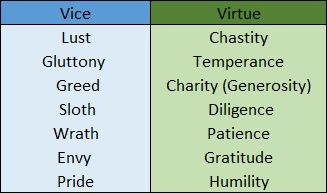 The
seven deadly sins are the seven behaviors or feelings that inspire
further sin. They are typically listed as: pride, greed, lust, envy,
gluttony, wrath, and sloth.
The
seven deadly sins are the seven behaviors or feelings that inspire
further sin. They are typically listed as: pride, greed, lust, envy,
gluttony, wrath, and sloth.
The seven virtues became identified as chastity, temperance, charity, diligence, patience, kindness, and humility.
It
may be instructive to compare these Christian virtues and sins with
those of Sufism, for Master Kayhan described a similar set of vices and
virtues. He referred to the latter as “the eight gates of Heaven”
(mentioned in a Tradition). I have augmented the list to include
closely related concepts so as not to lose them in translation:
1.
Compassion, kindness and affection. 2. Righteousness (Honesty,
truthfulness, uprightness). 3. Loyalty. 4. Generosity. 5. Patience. 6.
Discretion (Keeping secrets). 7. Knowing one’s poverty and weakness
(Humility). 8. Giving thanks to God (Gratitude).
Without these,
there is no peace, happiness or Paradise in either world. As for the
seven circles of Hell, the following are the traits that open their
gates:
1. Pride. 2. Covetousness (Greed). 3. Envy. 4. Discord (Divisiveness). 5. Backbiting (Gossip). 6. Lust. 7. Anger (Wrath). [14]
Notice
that there are more gates of heaven than of hell, in line with the Holy
Tradition: “My mercy encompasses (exceeds) My wrath.”
For easy comparison, the two sets of vices and virtues are tabulated below. Items that are common to both have been shaded:

Inspection
of this table reveals that the two vice/virtue sets overlap. They are
not identical—similar, but different. Gluttony and sloth do not exist in
the Master’s list, which certainly does not disqualify them from being
vices. Gluttony is covered by the Verse: “Eat, drink, but do not waste” (7:31)—which implies all kinds of resources as well. The Sufi saying: “Eat little, drink little, sleep little, speak little”
is a further guideline. And sloth is dealt with in the Verse: “A person
can have nothing but what s/he has labored for” (53:39, about the same
as 2 Thess. 3:10). Another point to note is that while the vices and
virtues of Christianity are polar opposites of each other, not every
vice or virtue in the Master’s list has its opposite listed. For
example, Lust is not the opposite of Compassion. Another thing about
Lust is that only Illicit Lust, that is, the extramarital kind, is
considered sinful. With a little stretch, Discord can be considered the
opposite of Loyalty, and Gossip of Discretion.
We now resume our review.
From Virtue to “Rights”
Chapter 4, “Subjectivizing Morality,” details how the ethics of virtue became supplanted by a state-supported ethics of rights.
Because
virtues, despite all the efforts of pre-Reformation Christianity, were
not being implemented properly, rights had to be instituted to shield
people from the vices of others. Before the Reformation, human rights
had come to be regarded as natural rights. These, in turn, were grounded
in the perception that God made man in His own image (Genesis 1:27).
This is echoed by two Sayings of the Prophet: “God made the human in His
own likeness” [15] and “God created Adam in the image of the Compassionate (al-Rahman, a Divine Name of God).” [16] This is why the human was—all human beings were—considered to possess inviolable natural rights.
Rights and the Modern Conception of Nature
Just
as, in the Soviet Union, those who wished to stay away from politics
and had the necessary aptitude took refuge in mathematics, those who
wished to avoid corrosive religious disputes during and after the
Reformation took refuge in science. Instead of the Bible, they turned to
the study of that other book of God: the Book of Nature. No matter what
your religious belief, experiments gave the same results. As one UR
reviewer observed, Newton’s apple fell at the same speed for Catholic
and Protestant alike. Here was a field of enquiry where all reasonable
people could agree upon without getting bogged down in fruitless
arguments. As science became the driving force behind technology, and
the latter gave birth to products that immensely improved the living
conditions of humanity and hence the common good, these two came to
supplant religion in the minds of the multitudes. And yet, neither
science nor technology could be a proper substitute for religion,
because they were not normative and dealt solely with the material
world. They had nothing to say about ethics or spirituality.
The rejection of virtue ethics, writes Gregory, stemmed primarily “from its continuing association with Roman Catholicism” (UR 185). Besides, it was unbiblical. (Luther railed against Aristotle’s Nicomachean Ethics
as “worse than any other book”.) With the ethics of virtue on the way
out, some Christians tried to ground human well-being in “natural
rights.”
But as nature comes to be increasingly defined (and circumscribed) by
science, the ground for such rights begins to wither away. Science
recognizes only matter and energy, it deals only with measurable
entities such as mass, length (Descartes’ res extensa) and time. With God—whose image humans are created in—out of the picture, there is nothing in science from which “rights”, or even meaning, can be derived.
Gregory is careful to distinguish between “methodological naturalism,” which is the method of the physical sciences investigating “natural regularities,” and “metaphysical naturalism,”
which says that the world accessible by the five physical senses is all
there is. The first has proven immensely productive; the second, being
metaphysical, can only be an assumption. As Charles Taylor has observed,
science is the study of matter (energy, too, is a “mode” of matter—E=mc^2).
It is a leap of faith to jump from this to the conclusion that nothing
but matter exists. The latter also engenders a mechanistic view of
nature, with everything being viewed as mechanical and the human being
ending up as a machine.
Nobel physicist Steven Weinberg says: “The more the universe seems comprehensible, the more it also seems pointless.”
Though he backpedals on that statement later, he gives voice to a very
cogent point. In the field of biology, Darwinian evolution and
neo-Darwinism lead to Richard Dawkins’ worldview, which has been
summarized as “we are biological robots living in a meaningless universe” [17]—the very peak of nihilism.
In
this view, the human, which in practice means the human body, is made
up of protons, electrons and neutrons—entities completely devoid of
psychological or spiritual qualities. The founding fathers of quantum
physics, Niels Bohr and Werner Heisenberg, once came to the conclusion
in a discussion that there is nothing in quantum physics which can
explain life and consciousness.
Heisenberg: “There can be no
doubt that ‘consciousness’ does not occur in physics and chemistry, and I
cannot see how it could possibly result from quantum mechanics.” Bohr agreed. [18]
If
protons, electrons and neutrons (plus an assortment of other elementary
particles) are all that exist, there is no basis for human rights,
natural or otherwise. Swarms of particles, which Gregory calls
“biological matter-energy,” don’t have—can’t have—“rights.”
Finally,
the ethics of virtue becomes supplanted by the ethics of rights (though
without any rational basis for the latter). Note, however, that virtue
ethics were for individual human beings to carry out. The ethics of
rights, on the other hand, are for the state to implement. And if
Macchiavelli and Hobbes are correct, those rights exist solely at the
discretion and sufferance of the state. What the state grants, it can
also revoke—the state giveth, and the state taketh away. Why even call
this “ethics”,
when ethics is supposed to guide the conduct of human persons? All the
while, there is no sign of a return to the ethics incumbent on
individuals. (For an ethics of rights in Islam, see Sidebar 3.)
The
switch from personal virtues to state-defined rights led to the
following result. In Protestantism, according to Gregory, the pursuit of
holiness, the imitation of Christ (the carrot), was replaced by
avoidance of punishment (the stick) (UR 210). Love, in other
words, was replaced by fear. (This picture, however, seems to leave out
an elephant in the room: the Inquisition.)
The U.S.A. and the Secularization of the World
The
story of the post-Reformation era continues with the United States.
Whereas the Dutch had shown toleration towards various Reformist
movements, the US was the first country to enshrine it in its
constitution. Other countries would follow in its wake. It began with
Thomas Jefferson’s famous words in the Declaration of Independence: “we
hold these truths to be self-evident: that all men are created equal;
that they are endowed by their Creator with certain unalienable rights;
that among these are life, liberty and the pursuit of happiness.”
Jefferson’s
precepts are, at first glance, wonderfully benign. The problem begins
when we realize that life, liberty and happiness are left undefined.
Which is also a good thing on the surface of it: let everyone define it
for themselves. But it so happens that one man’s happiness can be
another’s despair. Inadvertently, the Declaration has made no provision
for this possibility. Perhaps, when it was written, most people
understood the same thing, which presupposes a shared ground of ethics.
But what happens when that ground evaporates? These principles can work
within society only if there is widespread agreement on what they
consist of. But what if there is no such agreement, if your happiness
entails my suffering?
Jefferson and his friend, James Madison,
thought they had found the answer to this conundrum in the separation of
church and state. Politics and religion were to be divorced.
Simultaneously, the life of the individual was to be divided into two
areas: the public sphere and the private sphere. The public sphere was
to be regulated by the state, based on the rights granted to citizens.
The private sphere was to be a person’s own, inviolable area, where one
was free to believe and worship as one wished. It was this private
sphere that religion was to be confined to. “The religion then of every
man must be left to the conviction and conscience of every man,” Madison
wrote in 1785. And “Jefferson thinks it doesn’t matter what you believe
so long as it isn’t publicly disruptive or damaging.” (Rebel
239) Religion, which in the pre-Reformation era had informed everything
from politics to economy to law, was to be restricted to the private
sphere alone. This was a culmination of “Luther’s sharp two-kingdom
distinctions between faith and politics, the inner man and the outer
man, the freedom of a Christian and obedience to secular authorities” (UR 270).
Of course there is a problem here, for as Gregory says: “Private life and public life are inseparable in real life.” (UR
186) What you do in private will have a subtle but nonzero effect on
your public life and, as a consequence, on the public life of others. As
an example, this is one of the reasons why marriage is such an
important social institution.
Only Scripture could be the final judge and arbiter of a person’s conscience. But since Luther’s Sola Scriptura
made the interpretation of Scripture a free-for-all, everyone was at
liberty to decide as they please. In Thomas Paine’s words, “My own mind
is my own church.” This, says Gregory, is “the unintended road to the
elimination of any shared notion of the good” (UR 216):
The
unprecedentedly formal, substantively empty, and baldly asserted claims
about self-evident truths and inalienable rights in the founding
documents of the United States were socially viable because American
Christians continued to hold so much in common despite their
differences. . . . Overwhelmingly, through [the Protestant churches]
and their families they learned their moral values and behaviors. (UR 218)
For
a surprisingly long time, things worked. Thus, when Alexis de
Tocqueville visited the USA in the early 1830s, he noted: “There is an
innumerable multitude of sects in the United States. They are all
different in the worship they offer to the Creator”—yet “all agree
concerning the duties of men to one another” and “all preach the same
morality in the name of God.” And this common Christian morality,
regardless of doctrinal belief, served to put the “united” in the United States for a long while.
But
there was a ticking time-bomb hidden in this state-supported ethics of
rights. For “my own mind is my own church” meant that eventually, the
common morality that held things together would follow in the footsteps
of belief—it would erode. The seams would burst, morality would become
relativized, and the path that led to a church of atheism or even a
church of satanism would be opened (just Google them).
Once it
became obvious that the common ground provided by religion had been
lost, hopes were pinned for a while on the philosophers. Perhaps moral
philosophy, aided solely by reason, would succeed where religion had
failed. Unfortunately, just as the Reformers had been unable to agree on
anything substantial, the philosophers too failed to come to an
agreement even in defining the most basic terms “good” and “evil.”
And the truth is, no basis for morality can be found without recourse
to the Divine Lawgiver, who happens to be God. So that, too, proved to
be a dead end.
 As Gregory puts it,
As Gregory puts it,
What
[the founding fathers] could not have foreseen was what would happen to
an ethics of rights when large numbers of people came to reject the
shared beliefs that made it intellectually viable and socially workable. (UR 218; emphasis in the original.)
People are demanded to recognize ever more preposterous “rights,”
to show them ever more toleration, while the state, says Gregory,
becomes ever more oppressive and suppressive in enforcing those demands
once they are enshrined in law. Already its surveillance has become
all-invasive. And today, Christians cannot agree even on what is right
and what is wrong, what is good and what evil—whether torture
(sugar-coated with euphemisms such as “enhanced interrogation”)
and assassinations are good things, whether suicide should be assisted
or is tantamount to murder, whether or not greed, extramarital sex,
same-sex marriages, draining the Earth’s resources, and hard-heartedness
toward the poor are bad. Hello heartache, goodbye morality.
According
to an outside observer, the anthropologist Akbar Ahmad, the USA is
stuck in a dichotomy between two figures: Darwin and Jesus. (What Ahmad
says has nothing to do with biology or the theory of evolution: its
concern is solely ethical.) “Darwin represents adaptability and
survival, Jesus compassion and universal love.” [19]
In terms of human affairs, the first stands for amorality (if not
outright immorality), the second for morality. These two are so
antithetical that no reconciliation is possible. The tension this
creates leads to a schizophrenic state—to insecurity, engendering fear
and anger. And to the extent that the world has become Americanized, the
same situation is replicated in other places as well.
 So
today, like Alice, we stand at a crossroads where we don’t know which
way to go. There are too many signposts pointing in too many directions.
We need a solid base on which to build a notion of common good, but
lack it. Without a shared morality, the center cannot hold. This is our
predicament today.
So
today, like Alice, we stand at a crossroads where we don’t know which
way to go. There are too many signposts pointing in too many directions.
We need a solid base on which to build a notion of common good, but
lack it. Without a shared morality, the center cannot hold. This is our
predicament today.
Here is the problem in a nutshell: We have
lost the common moral ground, and we need to regain that. Minority views
can survive as long as majority consensus holds. Otherwise, the ship
goes down with everyone on board. We have lost a morality that is
socially shared, and we need to recover it.
The Goods Life
In Chapter 5, “Manufacturing the Goods Life,”
Gregory points to acquisitiveness as a prime factor in modern
economies. The good life is the “goods life” in an endless cycle of
acquire-discard-repeat, which is the essence of consumerism. According to Gregory, it all began with the Dutch, who preferred shopping to theological controversy. As one UR
reviewer noted, “avarice not only increased rapidly among the public
but was itself transformed into a cultural virtue... material prosperity
became a sign of God’s providence.” [20]
Conflating prosperity with providence and opting for
acquisitiveness as the lesser of two evils until greed was
rechristened as benign self-interest, modern Christians have in
effect been engaged in a centuries-long attempt to prove Jesus
wrong. “You cannot serve both God and Mammon.” Yes we
can. (UR 288)
As Gordon Gekko says in the 1987 movie Wall Street, “Greed ... is good.”
But it had already been said, and much more authoritatively, in 1970 by
the economist Milton Friedman, who titled an article for the New York Times Magazine “The Social Responsibility of Business is to Increase its Profits”.
If Christianity is among other things a discipline of selflessness in
charitable service to others, then the United States’ legally
protected ethos of self-regarding acquisitiveness, culturally
reinforced at every turn, would seem to be its antithesis. The
latter says “satisfy your own desires”; the former, “you must deny
your very self.” (UR 294)
Hence
in the economic field, greed becomes enthroned, with the result that
the rich get richer and the poor, poorer without any compassion for the
downtrodden.
Let us take a closer look at “Greed is good.”
This means that non-greed is evil. That is, charity or generosity is
evil. This is basically Ayn Rand’s philosophy, which George Monbiot
summarized as follows: “Selfishness is good, altruism evil, empathy and
compassion are irrational and destructive. The poor deserve to die”.
This is to stand traditional ethics on its head: it is anti-ethics. It
is not moral, nor even amoral, but anti-moral. (It is no coincidence
that Rand was an atheist.) Such people are reduced to the position of
Scrooge in “A Christmas Carol.” As noted above, “greed was rechristened as benign self-interest” (UR 288). “Not ascetic self-restraint but acquisitive self-seeking is the key to improving society.” (Rebel 247)
But
this is only the beginning. Once evil gets a foothold, it doesn’t stop
there. It begins to encroach on other virtues as well. There is a
spillover effect. The next step can be gluttony. One can be a glutton,
not for food, but for goods. And this is precisely what we see in
consumerism, although most people are not on the serving but the
receiving end of this process. We are being forced to consume more and
ever more commodities, to buy and accumulate possessions we don’t really
need, like Strasbourg geese that are being force-fed. And this is why
Gregory says “the good life” has become “the goods life”: “To be is to buy” (UR
239). The meaning of life is to squander one’s money in frivolous
spending. Meanwhile, since the Earth is a finite-resource planet, many
others are forced to go without whatever we remove from circulation.
(The best solution is to recirculate—to give in charity.) A man of
knowledge once said it well: “Touch your world lightly.” So did the Prophet: Even if you’re standing beside a vast sea, you should still use only as much water as necessary.
The
goal of evil is always the center of the chessboard: Illicit Lust and
Illicit Wealth. Once these two fortresses are conquered, evil has won
and good has permanently lost.
Sooner or later, this process will lead to pride and arrogance, or hubris. The Greeks knew something about hubris. In Greek tragedies, hubris is always followed by nemesis,
just as a positive charge is sure to attract a negative charge. There
is no escape. It may not happen immediately, but it surely will, sooner
or later.
To exchange humility for pride, generosity for greed,
chastity for Illicit Lust, is not just a bad deal—it is a terrible deal,
which will inevitably end in bitter remorse.
The Fragmentation of Knowledge
Chapter 6, “Secularizing Knowledge,” deals with the transformation of higher education into a secularistic endeavor.
In
this final chapter, Gregory traces how higher education has evolved. In
his view, the interrelatedness of knowledge has been lost: “if all
types of knowledge are really knowledge, they [should] cohere… But no
academics are trained to inquire about the incompatible assumptions and
claims made by scholars and scientists in various disciplines” (UR 301).
Truth
cannot be self-contradictory. As the expression of truth, knowledge
must also obey the principle of noncontradiction. The various
disciplines in higher education, however, lack harmony: being based on
contradictory assumptions, they give rise to incompatible claims. It is
as if they are dealing with entirely separate realities, instead of
separate parts of the same reality. Perhaps one could even call this
“polytheism,” if theism had anything to do with any of it.
The
universities, Gregory explains, were indispensable to the rulers
because of defense reasons. But as religious wars progressed, rulers
were forced to regulate the universities. Emphasis shifted toward
teaching rather than research. Since science in the modern sense was
also starting to take off, intellectuals began to take their research
outside the university, to palaces and royal courts, or even their own
homes. Gradually, universities became places to which religious
knowledge was confined. Because religious knowledge thus became divorced
from scientific knowlege, theologians were progressively less able to
keep track of new developments, or even to address problems that the new
science was throwing up. Finally, the University of Berlin, founded in
1809, became the prototype of modern-day educational
institutions—science moved back in with a vengeance.
What was
lost in the emerging multidisciplinary enterprise was a unifying vision
that could integrate all branches of knowledge, a whole that could not
be regained merely by interdisciplinary approaches. Today, the various
disciplines in the sciences, arts, humanities, and religious studies
exist as dismembered parts of an organism that have been brought
together again in an effort to breathe life back into it, rather like
the case of a certain infamous doctor in literature who was trying to
create a living human being by stitching body parts together.
Gregory sums everything up in his Conclusion:
“medieval Christendom failed, the Reformation failed, confessionalized Europe failed, and Western modernity is failing” (UR 365).

[Sidebar 3]
Sufism and the Reformation: Some Thoughts
The Reformation and Sufism
Though
Gregory does not explicitly say this, a literal approach to the Bible
also meant that whatever spirituality and esoterism/esotericism that may
have been present in pre-Reformation Christianity was all bleached out,
and a dry rational reading of the Bible was left. This paved the way
for Rosicrucianism, plus alchemy, early Freemasonry and
Hermetism/Hermeticism, to fill the void, and to provide a bridge between
Protestantism and Catholic esoterism.
One
source on Protestant mysticism defines the centerpoint of mysticism as
follows: “the conscious self has to be ‘annihilated’ in order for a
believer to experience union” [21]. This is a good way of expressing the fana (annihilation, extinction) and wahda (union) concepts of Sufism.
For
a long time, Protestantism was regarded as being more or less opposed
to mysticism. Adolph von Harnack wrote, “a [Christian] Mystic who does
not become a Catholic is a dilettante.”
(1905) Evelyn Underhill was of the opinion that “mysticism has never
been really at home in the Lutheran—still less in the Calvinistic—branch
of the Church.” (1925) And Walter T. Stace (himself a Protestant) concluded that “there are no Protestant mystics”
(1963). Now these are all scholars with deep theoretical (if not
practical) knowledge of mysticism, and their opinion is not to be
lightly dismissed.
More
recent scholarship has sought to find some connection, however tenuous,
between the Reformation and mysticism. Bernard McGinn points out that
“Luther read the mystics selectively for the purpose of finding support
for his own theology”—his approach was one of “both appropriation and rejection.” [22]
Although he paid attention to mysticism, he was a theologian rather
than a mystic. Calvin was even less inclined to mysticism. Jacob Boehme,
perhaps the most well-known Protestant mystic, was attacked as a
heretic. Nevertheless, McGinn’s research has succeeded in establishing
“Protestant mysticism” as a respectable academic category.
Self-Purification
One clear difference of Sufism (or Islam) from other spiritual activities is in the performance of the Prayer.
 Before
proceeding with the Daily Prayers, one has to reach a state of ritual
purification. The Koran says: “God loves those who turn to Him
constantly and He loves those who keep themselves pure and clean”
(2:222). This is achieved by the Ablution. According to the Koran, the
state of outer—bodily—purification, the Ablution, is to be followed by
inner—spiritual—purification, which is to perform the Prayer. “God loves
those who purify themselves”
(9:108). We may not be painted black, but we all come in various shades
of gray. God wishes us to be white as snow. The king won’t enter the
palace before its construction is complete.
Before
proceeding with the Daily Prayers, one has to reach a state of ritual
purification. The Koran says: “God loves those who turn to Him
constantly and He loves those who keep themselves pure and clean”
(2:222). This is achieved by the Ablution. According to the Koran, the
state of outer—bodily—purification, the Ablution, is to be followed by
inner—spiritual—purification, which is to perform the Prayer. “God loves
those who purify themselves”
(9:108). We may not be painted black, but we all come in various shades
of gray. God wishes us to be white as snow. The king won’t enter the
palace before its construction is complete.
The Prophet said, “Prayer is the Ascension of the faithful.”
This spiritual elevation takes place in the realm of the unconscious,
in the Unobservable (or Unseen) world. You may feel a state of peace, or
sakina—the indwelling presence of God—descend upon you during
Prayer, but not be aware of any elevation as such. Nevertheless, it
occurs.
Think
of a hospital, an unconscious patient on a gurney, assisted by two
nurses. Suppose they’re taking the patient from the ground floor up to
the seventh floor. They enter the elevator and press the button. The
patient, being unconscious, will not feel a thing, but the nurses will,
and when the doors open, they will all find themselves on the upper
floor. Prayer is just like that.
Secularity in Islam
It
is amazing that in all the discussions of Islam, the toleration and
secularity inherent in it are downplayed so much: “To you your religion,
to me, mine” (109:6); “There is no compulsion in religion” (2:256)
(the first was revealed in the Meccan and the second, in the Medinan
period). These are simple and clear Verses that require little
interpretation, if any. A main principle of modernity, reached only
after the religious wars of the Reformation era, is present in the Koran
itself. And a Prophetic Saying states: “There is no clergy/monasticism
in religion.”
The nonexistence of a church or monasticism in Islam makes it
simultaneously a religion of laity and one in which every believer can
serve as Prayer-leader.
Islam
is a world religion, not a tribal or provincial one. This means it can
be lived by all people everywhere and everywhen. Hence, it can be
adapted to life in modern secular societies also, and that is why
secularity is inherent in Islam. We need to set aside our cultural
prejudices (on both sides) and look at it with fresh eyes.
Consider the Ottomans
The Ottoman society was ruled by the millet system, where many faiths and nations could coexist peacefully. (Millet, pronounced “mill-let,” meant “nation,” but in the sense of a religious community—such as the “nation”
of Christians.) Each faith was allowed to rule within its own
boundaries. Moslems were judged by the rules of Islam, Christians by
those of Christianity, and the Jewish people by Judaic law—and each by
their own independent authorities.
Yet around the middle of the 19th century, the Ottomans instituted far-reaching legal and social reforms. Why did they do this?
Within
their own spheres of influence, Moslem, Christian and Judaic rulings
were quite sufficient—if the parties concerned were co-religionists. The
problem arose when they were not. For instance, suppose there was
litigation between a Moslem and a Christian or a Christian and a Jew.
How was a judge to decide between people of different faiths? Thus the
need arose to define a concept of members of society without reference
to their religion, and to set forth a law that could act as mutual
ground (a greatest common denominator) for all, no matter what their
convictions were.
We
thus see that in multiethnic, multireligious and multicultural
communities—which is pretty much what the whole world is today—there is
need for a “secular” law that can address the needs of all concerned. This becomes possible if you don’t insist on rule by sharia (the Islamic divine law) for everybody—an impossibility in multicultural societies. The Ottomans were able to achieve this peacefully with the codification of the Majalla (Trk. Mecelle: codex), at least in part thanks to the—unacknowledged, and largely even unknown—secularity inherent in Islam.
The Mecelle was the late Ottoman period civil code, applied in secular (nizamiye)
courts. Although still based on Islamic law, it accomodated the
participation of Jews and Christians. Especially notable is its
introductory section, outlining general principles which, regardless of
religion, no reasonable person would find objectionable.
An Islamic Ethics of Rights
An
ethics of rights also exists in Islam, but it is of a different kind.
Here, the responsibility for observing the rights of others is placed
squarely on the individual, instead of being defined, delineated, and
enforced by the state. And it includes not only human rights, but also
animal rights—even the rights of inanimate matter. Since God is accepted
as immanent in everything, all members of the three (nonhuman)
kingdoms—animal, vegetable and mineral—are assumed to be imbued with
spirit, each with their own distinctive kind. (The spirit of “dead” objects, for instance, is of a more static nature, as attested by psychics who see their “auras.” [23]) The message is: If you have any sense, don’t even kick a stone needlessly.
The term for this is “the rights of (God’s) servants.” If you’ve seen either of the Flatliners
movies (1990, reboot in 2017), they give a pretty good idea of what is
involved. A group of medical students experiment with stopping the
heart, thus “flatlining”
their ECGs and inducing a quasi-after-death state. In that state, their
previous infractions of others’ rights come back to haunt them. This is
a good description of what will happen in real post-mortem conditions.
In the Koran, the rights of servants are implicit in the concept of justice (adl), as opposed to injustice (zulm). Zulm
is etymologically associated with darkness, which is a fitting
expression for oppresion and cruelty. Thus “God will not forgive those
who have ... committed injustice” (4:168). The “bankruptcy” Tradition of the Prophet unpacks this:
The Prophet once asked his Companions, “Do you know who is bankrupt?”
They said, “A bankrupt person is one who has no money or possessions.”
The Prophet said,
“The
bankrupt in my community is one who comes on the Day of Judgment with
Prayers, fasting, and charity; but who has insulted one person,
slandered another, wrongfully consumed others’ wealth, shed the blood of
this person, and beat that one.
“Each one of the oppressed will be given portions of the wrongdoer’s good deeds.
“If
that person’s good deeds run out before justice is fulfilled, this time
their sins will be taken from their accounts and added to that person’s
account.” [24]
In sum: God will forgive sins committed against God, but forgiveness has to be obtained in this life from the “servants” themselves, for infringements committed against servants.

The Reformation Needs a Reformation
We
have seen that the Reformers, despite all their good intentions, did an
uneven job. In some things they did too much, in others they didn’t do
enough. In eliminating works and merit, they went too far.
On the
other hand, for all his opposition to the Roman church, Luther did not
go far enough. Original sin is unbiblical; he did not abandon original
sin (see Sidebar 1). The Trinity is unscriptural; he did not abandon the
Trinity (see Sidebar 2). Having denounced the Catholic Church, he could
not bring himself to let go of the concept of a church. And so on.
Which brings us to a very important point.
As some who lived in
that era were already recognizing, what is needed is a new reformation: a
Reformation of the Reformation—this time, a nonviolent one. It will
gradually dawn on people that this is necessary, indeed unavoidable.
Imagine
what would have happened if Jesus had dictated the Revelation given him
by God (19:30) directly to his followers—for example, the Disciples. If
this had been almost hermetically preserved. If he had left behind a
book that was consistent, coherent, and unencumbered by multiple
authorship. If Jesus had explained and supported Revelation with further
logia (sayings) of his own, in answer to questions from his followers.
In
such a case, there would have been a single, irreproachable text, and a
single, master interpreter, one best placed to explicate what was not
understood. Perhaps, as time went on, there would still have been
differences of opinion among his followers, leading gradually to a
variety of schools, sects, and mystical fraternities. But divergences
would have been on a vastly diminished order and scale. Most of all,
people would be agreed at least on the essentials and on the ethics,
which is all-important.
Well, these things did in fact happen.
Only, not with Jesus. With the Prophet Mohammed. The Prophet finished
the task started by Jesus, whose career was interrupted in mid-course.
Jesus,
of course, knew what was coming, and he tried to inform his followers
that someone else would be sent to finish the task he started. Today we
know this person as the Paraclete, mentioned in the Gospel of John. The
Paraclete is thought to be the Holy Spirit. But John 16:13 declares: “As
he hears, so he will speak.” In Greek, akouei corresponds to “he hears” and lalesei to “he will speak”. As Maurice Bucaille noted, “The two Greek [root] verbs akouô and laleô
... can only be applied to a being with hearing and speech organs. It
is consequently impossible to apply them to the Holy Spirit.” These
facts leave no doubt that this is a human being, and correspond exactly
to how the Koran was dictated. [25] (I have written more about this in Science, Knowledge, and Sufism.)
The Bible, being the work of many hands, is at best divinely inspired (in parts). What is God’s very Word is the Koran—and it confirms that Jesus was God’s Word, as well as His messenger (4:171, 3:45).
The Prophet’s morality was the Koran, and this is confirmed by the Koran itself: “Surely you are upon a mighty morality” (33:21). Furthermore: “Nobody can interpret the Quran according to their own lights.” (TPM 209) It has to be in the light of the Prophetic Traditions.
Luther’s
Reformation was not the first Reformation; it was actually the second
(or even third, if you count the Orthodox split of 1054). And it did not
go far enough. Furthermore, part of the baby was also thrown out with
the bathwater. The solution? We have to go back to what Professor Norman
O. Brown called “the first Protestant Reformation.”
For things were already beyond repair by the seventh century AD, and it
was not without reason that God sent new Revelation and a new (Final)
Testament to remedy matters.
What emerges from this study and my last one (“Salafism and Sufism”) is that only God can “reform” religion—by sending another prophet. (Human intervention doesn’t end well.) And since no further prophets will be forthcoming (except false ones)...
Of
course, Sufism has had its own variety of schools, sects and cults. I
can only vouch for the version taught and practiced by Master Ahmet
Kayhan, the details of which I have outlined in The Teachings of a Perfect Master (2012) (TPM) and in various other writings.
Jesus,
Christians believe, is the Word of God. Moslems believe that the Koran
is the Word of God. In the first case, the Word of God is manifested as a
person, in the second as a book. Moreover, the Koran, which is the Word
of God, bears witness that Jesus is the Word of God
(3:39, 45; 4:171). (He is also a messenger of God, the son of the Virgin
Mary, and the Christ or Messiah—all according to the Koran.)
Here
we encounter a problem. The first Word of God is no longer directly
available to us. His deeds are pretty clear, but his words are not
always easy to understand—they are complicated. After two millennia, we
can apprehend him only “as through a glass, darkly.” Whither to turn to, to reach a better understanding?
However, the second Word of God, the Book, is at hand...
Notes
[1] https://www.ncregister.com/blog/we-need-to-stop-saying-that-there-are-33-000-protestant-denominations
[2] https://www.christianitytoday.com/ct/2017/january-february/division-is-not-always-scandal.html
[3] http://www.philvaz.com/apologetics/a120.htm (Scroll to the bottom for the count of the day.)
[4] Gregory Boyd and Paul Eddy, Across the Spectrum: Understanding Issues in Evangelical Theology (2009).
[5] Jaroslav Pelikan, The Christian Tradition, vol. 1: The Emergence of the Catholic Tradition 100-600 AD (1971), p. 175.
[6] Brad Gregory, Salvation At Stake (1999), p. 349.
[7] Dale Tuggy, “The Unfinished Business of the Reformation”, in Herausforderungen und Modifikationen des klassischen Theismus, Band 1: Trinität, T. Marschler and T. Schärtl (eds.), Münster: Aschendorff Verlag, 2019, pp. 199–227.
[8] Stanford Encyclopedia of Philosophy, “History of Trinitarian Doctrines”.
[9] Gregory of Nyssa, Catechetical Orations, quoted in Jaroslav Pelikan, The Christian Tradition, vol. 1: The Emergence of the Catholic Tradition 100-600 AD (1971), pp. 66-67.
[10] https://restitutio.org/2015/12/08/the-story-behind-the-comma-johanneum-1-john-5-7/
[11] Ernst Troeltsch, The Social Teaching of the Christian Churches (1912, Eng. tr. 1931), pp. 572, 548. See also pp. 519-20.
[12] H. Bayman, The Teachings of a Perfect Master (2012) (TPM), pp. 50-60, 87, 138.
[13] Nawawi, Forty Hadith; Ahmad Ibn Hanbal, Musnad (for the last one).
[14] H. Bayman, The Secret of Islam (2003), pp.86-88.
[15] Bukhari 6227, Muslim 2841.
[16] For more details, see Christopher Melchert, “‘God Created Adam in His Image’”, Journal of Qur’anic Studies 13.1 (2011): 113–124.
[17] Due to Alex Tsakiris.
[18] Werner Heisenberg, Physics and Beyond (1971), p. 114.
[19] Akbar Ahmad, Journey Into America (2010), pp. 25-28.
[20] https://hansmoscicke.wordpress.com/2016/06/28/the-unintended-reformation-overview-of-chap-5/
[21] Sara Poor and Nigel Smith (eds.), Mysticism and Reform (2015), p. 11.
[22] Bernard McGinn, “Mysticism and the Reformation: A Brief Survey,” Acta Theologica, vol. 35 n. 2 (2015), pp. 50-65.
[23] See e.g. Shafica Karagulla, Breakthrough to Creativity (1967), Chapter 5.
[24] Muslim, Sahih, 2581.
[25] M. Bucaille, The Bible, the Qur’an and Science (tr. Alastair D. Pannell and M. Bucaille), Paris: Seghers, 1976, p. 114.

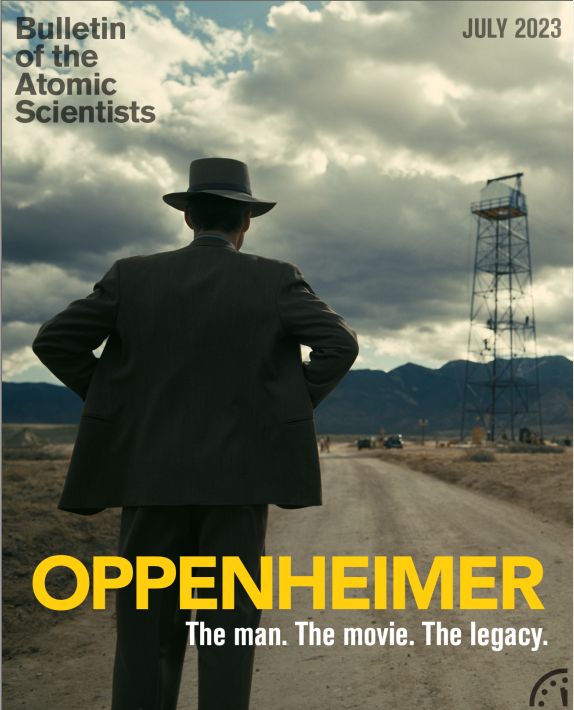
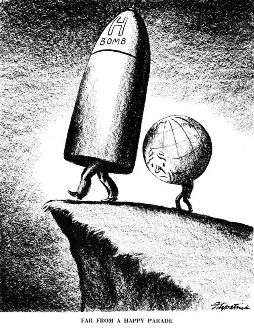 Perhaps the most important revelation from Ellsberg’s book is that it explodes the myth that the President of the USA will be the one and only person to decide the launch of nuclear weapons. The problem here is the “decapitation strike:” what if all the central decision-makers have been obliterated? The solution is to delegate responsibility downwards, to the theater commanders, but by the sheer force of the logic, it devolves all the way down to individual bomber pilots or ICBM launch lieutenants. And the same goes for the Russians: their “Dead Hand” response has been known for years, in which an automated retaliation can be activated even if there’s no one left to decide.The Aftermath
Perhaps the most important revelation from Ellsberg’s book is that it explodes the myth that the President of the USA will be the one and only person to decide the launch of nuclear weapons. The problem here is the “decapitation strike:” what if all the central decision-makers have been obliterated? The solution is to delegate responsibility downwards, to the theater commanders, but by the sheer force of the logic, it devolves all the way down to individual bomber pilots or ICBM launch lieutenants. And the same goes for the Russians: their “Dead Hand” response has been known for years, in which an automated retaliation can be activated even if there’s no one left to decide.The Aftermath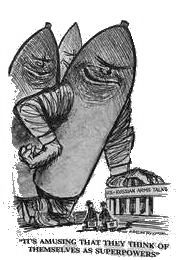

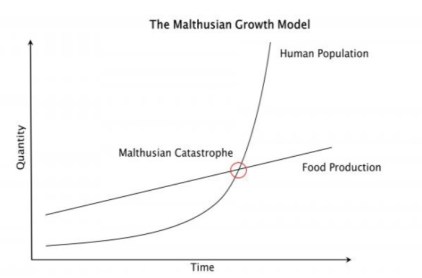 This
has naturally led to worries that the Earth will not hold up an
increasing population for long. One of the first to voice such
concerns was Thomas Malthus, who is famous for his claim that
the human population increases geometrically (exponentially),
whereas the amount of food increases only arithmetically (linearly),
so that human population cannot be sustained beyond a certain limit.
Malthus predicted that this tipping point would be reached
somewhere around 1890. It was about a century before that when he
made that prediction. He was also one of the first to encourage
biological warfare against humanity for the purpose of
depopulation. In his “Essay on the Principle of Population”
(1799), Malthus wrote that nature should be facilitated and not
impeded in producing mortality:
This
has naturally led to worries that the Earth will not hold up an
increasing population for long. One of the first to voice such
concerns was Thomas Malthus, who is famous for his claim that
the human population increases geometrically (exponentially),
whereas the amount of food increases only arithmetically (linearly),
so that human population cannot be sustained beyond a certain limit.
Malthus predicted that this tipping point would be reached
somewhere around 1890. It was about a century before that when he
made that prediction. He was also one of the first to encourage
biological warfare against humanity for the purpose of
depopulation. In his “Essay on the Principle of Population”
(1799), Malthus wrote that nature should be facilitated and not
impeded in producing mortality: 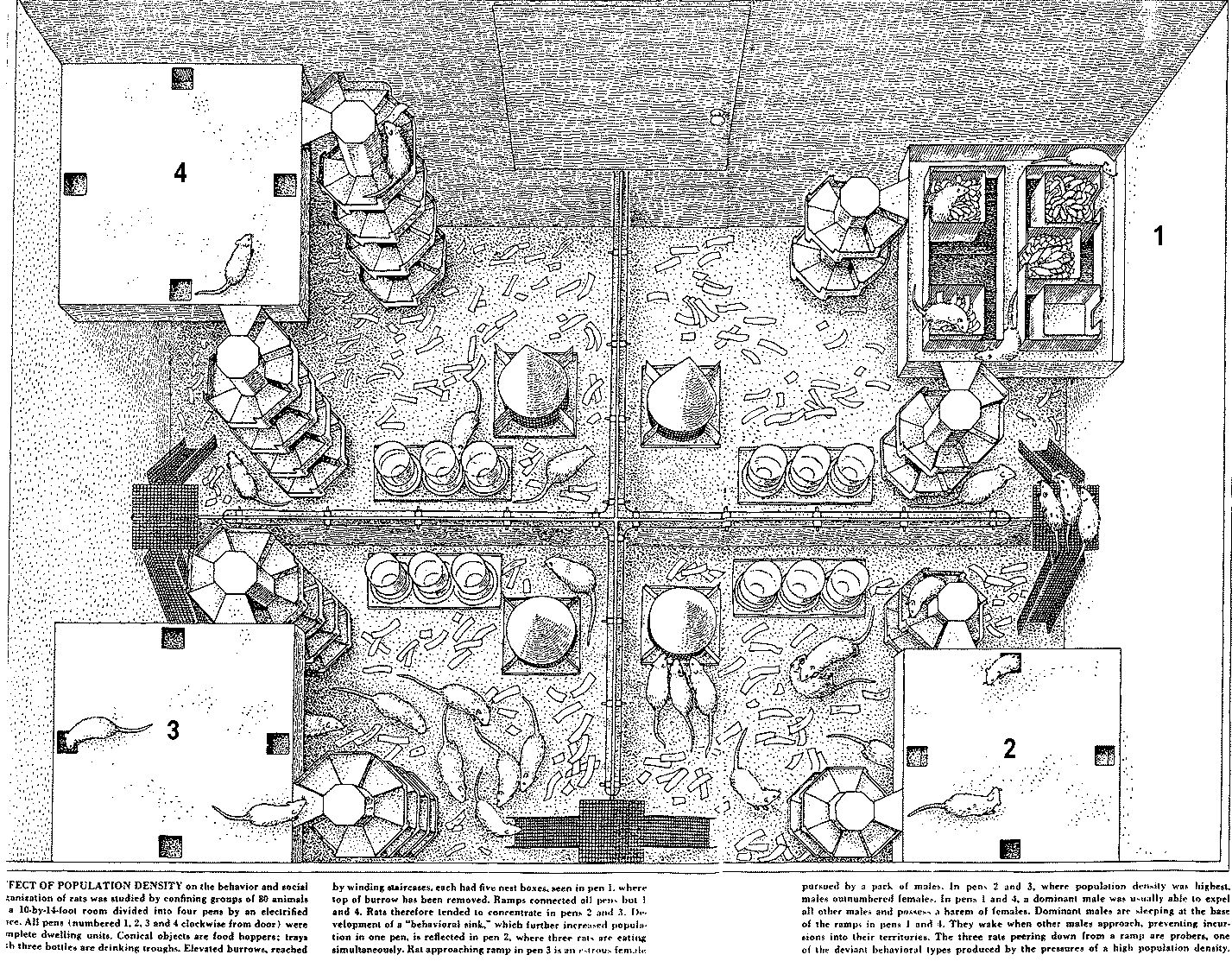



 This
is remarkable. To my knowledge, with the exception of
psychologist Carl Gustav Jung and his conception of “the
shadow,” this is the first time a scientist in the West, with no
apparent knowledge of Sufism, has deduced the importance of the
Base Self. Even if there have been others, however, he is
probably the first to link ecological disaster with this entity.
This
is remarkable. To my knowledge, with the exception of
psychologist Carl Gustav Jung and his conception of “the
shadow,” this is the first time a scientist in the West, with no
apparent knowledge of Sufism, has deduced the importance of the
Base Self. Even if there have been others, however, he is
probably the first to link ecological disaster with this entity.
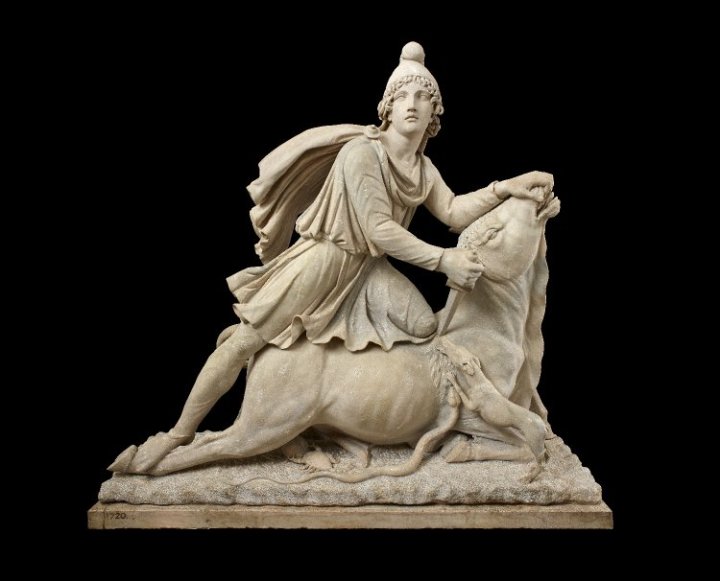 In
the space-horror TV series “Raised by Wolves” (S02E05),
Marcus descends in a cage to an underground cavern (the
underworld), where he discovers and destroys a monster.
Symbolically, this is the equivalent of Theseus entering the
labyrinth and slaying the Minotaur in Greek mythology. Both the
monster and the Minotaur are symbols for the Base Self. The
Minotaur is a creature with a human body and the head of a
bull. In Mithraism, too, which is Marcus’ religion, the main
scene is that of Mithras killing a bull, from which its name
tauroctony (“bull killing”) derives. It’s all about
conquering the beast that is the Base Self.
In
the space-horror TV series “Raised by Wolves” (S02E05),
Marcus descends in a cage to an underground cavern (the
underworld), where he discovers and destroys a monster.
Symbolically, this is the equivalent of Theseus entering the
labyrinth and slaying the Minotaur in Greek mythology. Both the
monster and the Minotaur are symbols for the Base Self. The
Minotaur is a creature with a human body and the head of a
bull. In Mithraism, too, which is Marcus’ religion, the main
scene is that of Mithras killing a bull, from which its name
tauroctony (“bull killing”) derives. It’s all about
conquering the beast that is the Base Self.  Note that we are not supposed to physically kill
the Base Self, for this would be suicide. Rather, what is
necessary is to tame and subdue the Base Self. The Prophet
said: “Die before you die.” This points to a psychospiritual
transformation in which a person undergoes metamorphosis: a
death-rebirth experience where one is reborn as a transformed
being—a Perfect Human or Friend of God. The Central Asian Sufi
sage Ahmad Yassawi speaks of opening “the second
notebook” (in Jonathan Trapman’s translation
Note that we are not supposed to physically kill
the Base Self, for this would be suicide. Rather, what is
necessary is to tame and subdue the Base Self. The Prophet
said: “Die before you die.” This points to a psychospiritual
transformation in which a person undergoes metamorphosis: a
death-rebirth experience where one is reborn as a transformed
being—a Perfect Human or Friend of God. The Central Asian Sufi
sage Ahmad Yassawi speaks of opening “the second
notebook” (in Jonathan Trapman’s translation 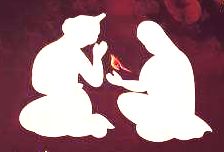
 In
a Middle Eastern Romeo-and-Juliet romance, Farhad and Shereen
(or Khosrow/Husrav and Shereen), Farhad has to bore through an
Iron Mountain in order to be united with his beloved,
Shereen. In one variant of the tale, the tunnel thus formed also
delivers life-giving water (or milk) to the nearby city,
which means that Farhad’s labor results in a boon for all
humanity. In another version, Farhad has to carve a staircase
into the mountain—which calls to mind the Prophet
In
a Middle Eastern Romeo-and-Juliet romance, Farhad and Shereen
(or Khosrow/Husrav and Shereen), Farhad has to bore through an
Iron Mountain in order to be united with his beloved,
Shereen. In one variant of the tale, the tunnel thus formed also
delivers life-giving water (or milk) to the nearby city,
which means that Farhad’s labor results in a boon for all
humanity. In another version, Farhad has to carve a staircase
into the mountain—which calls to mind the Prophet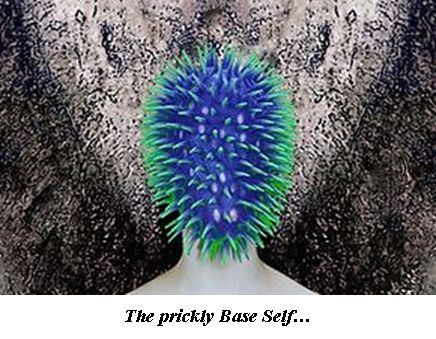
 I’m
reminded of a feat described by Alexandra David-Neel, who had
visited Tibet: drying a wet towel on one’s back and
shoulders—in the Himalayas. A sure-fire way to die for almost
all of us.
I’m
reminded of a feat described by Alexandra David-Neel, who had
visited Tibet: drying a wet towel on one’s back and
shoulders—in the Himalayas. A sure-fire way to die for almost
all of us.  And
how do we do that? I’m always telling you, above here [the
neck], stop the Forbidden. Whether it’s hearing, or sight, or
food and drink, or scent. Above here, quit completely. Below
[the belly], lust, Illicit Lust. Quit Illicit Lust. Whoever is
not Permitted is our mother, our sister. Let’s train in this
cave.
And
how do we do that? I’m always telling you, above here [the
neck], stop the Forbidden. Whether it’s hearing, or sight, or
food and drink, or scent. Above here, quit completely. Below
[the belly], lust, Illicit Lust. Quit Illicit Lust. Whoever is
not Permitted is our mother, our sister. Let’s train in this
cave. 

 ...
the Bible contains a variety of texts that are problematic in different
ways and that biblicist (among other) readers rarely know how to
handle. Some are texts that frankly almost no reader is going to live
by, however committed in theory they may be to biblicism. Others are
texts that need explaining away by appeals to cultural relativity
(although no principled guidelines exist about when that explanation
should and should not be applied). Some are passages that are simply
strange. And some are texts that seem to be incompatible with other
texts. (xi)
...
the Bible contains a variety of texts that are problematic in different
ways and that biblicist (among other) readers rarely know how to
handle. Some are texts that frankly almost no reader is going to live
by, however committed in theory they may be to biblicism. Others are
texts that need explaining away by appeals to cultural relativity
(although no principled guidelines exist about when that explanation
should and should not be applied). Some are passages that are simply
strange. And some are texts that seem to be incompatible with other
texts. (xi) The
result is an uncontrolled—and uncontrollable—proliferation of “many
thousands of different denominations, conventions, associations,
quasidenominational groups, and independent congregations.” (189) And
this is not a recent outcome—it was built into the Bible right from the
start.
The
result is an uncontrolled—and uncontrollable—proliferation of “many
thousands of different denominations, conventions, associations,
quasidenominational groups, and independent congregations.” (189) And
this is not a recent outcome—it was built into the Bible right from the
start. Ideally,
one would have to begin at the beginning, with the first centuries of
Christianity, and deal with the great schism of 1054—the split of the
Eastern Orthodox Church—along the way. But none of this will suffice to
explain the tens of thousands of splinters. For this, we have to focus
on the Reformation itself.
Ideally,
one would have to begin at the beginning, with the first centuries of
Christianity, and deal with the great schism of 1054—the split of the
Eastern Orthodox Church—along the way. But none of this will suffice to
explain the tens of thousands of splinters. For this, we have to focus
on the Reformation itself.  To
summarize in a few words the events that have filled many bookshelves,
Luther objects to the papal practice of Indulgences, a way of extracting
money from credulous believers. Rome objects, Luther stands his ground.
It is a case of an irresistible force meeting an immovable object.
To
summarize in a few words the events that have filled many bookshelves,
Luther objects to the papal practice of Indulgences, a way of extracting
money from credulous believers. Rome objects, Luther stands his ground.
It is a case of an irresistible force meeting an immovable object. 
 Luther’s
main opponent is the Roman church, and it was his intention to do away
with its authority. In Catholicism, the populace is divided into two
classes: the clergy, or priests of the church, and the laity (lay
persons of all kinds). In opposing the Roman church, Lutherans posited
the “priesthood of all believers.
Luther’s
main opponent is the Roman church, and it was his intention to do away
with its authority. In Catholicism, the populace is divided into two
classes: the clergy, or priests of the church, and the laity (lay
persons of all kinds). In opposing the Roman church, Lutherans posited
the “priesthood of all believers.
 From Theism to Nontheism
From Theism to Nontheism Chapter 2 of UR, “Relativizing Doctrines,
Chapter 2 of UR, “Relativizing Doctrines, Truth
passes in the mean between these two conceptions, destroying each
heresy, and yet accepting what is useful to it from each. The Jewish
dogma is destroyed by the acceptance of the Logos [Word/Son] and by the
belief in the Spirit, while the polytheistic error of the Greek school
is made to vanish by the Unity of the [divine] nature abrogating this
notion of plurality. Yet again, of the Jewish conception, let the Unity
of the nature stand, and of the Greek, only the distinction as to
persons. It is as if the number of the Trinity were a remedy in the case
of those who are in error as to the One, and the assertion of the unity
for those whose beliefs are dispersed among a number of divinities.
Truth
passes in the mean between these two conceptions, destroying each
heresy, and yet accepting what is useful to it from each. The Jewish
dogma is destroyed by the acceptance of the Logos [Word/Son] and by the
belief in the Spirit, while the polytheistic error of the Greek school
is made to vanish by the Unity of the [divine] nature abrogating this
notion of plurality. Yet again, of the Jewish conception, let the Unity
of the nature stand, and of the Greek, only the distinction as to
persons. It is as if the number of the Trinity were a remedy in the case
of those who are in error as to the One, and the assertion of the unity
for those whose beliefs are dispersed among a number of divinities. 
 Love, love one another. Love one another for God. There is no other salvation.
Love, love one another. Love one another for God. There is no other salvation.  The
seven deadly sins are the seven behaviors or feelings that inspire
further sin. They are typically listed as: pride, greed, lust, envy,
gluttony, wrath, and sloth.
The
seven deadly sins are the seven behaviors or feelings that inspire
further sin. They are typically listed as: pride, greed, lust, envy,
gluttony, wrath, and sloth.
 As Gregory puts it,
As Gregory puts it,  So
today, like Alice, we stand at a crossroads where we don’t know which
way to go. There are too many signposts pointing in too many directions.
We need a solid base on which to build a notion of common good, but
lack it. Without a shared morality, the center cannot hold. This is our
predicament today.
So
today, like Alice, we stand at a crossroads where we don’t know which
way to go. There are too many signposts pointing in too many directions.
We need a solid base on which to build a notion of common good, but
lack it. Without a shared morality, the center cannot hold. This is our
predicament today.  Before
proceeding with the Daily Prayers, one has to reach a state of ritual
purification. The Koran says: “God loves those who turn to Him
constantly and He loves those who keep themselves pure and clean
Before
proceeding with the Daily Prayers, one has to reach a state of ritual
purification. The Koran says: “God loves those who turn to Him
constantly and He loves those who keep themselves pure and clean